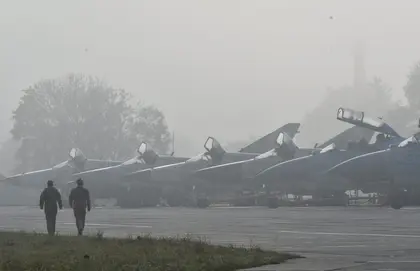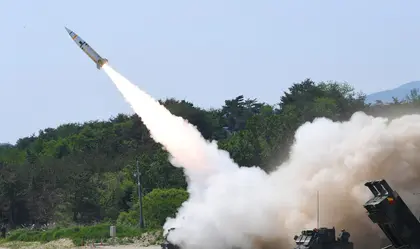Steve Brown, on April 28, broke a story in the Kyiv Post on “Why Did US Buy Old Soviet Aircraft from Kazakhstan?” The purchase of 81 Soviet-era military aircraft, including MiG-31s, MiG-27s, MiG-29s, and Su-24s, is of geopolitical note, as the article probes. The total purchase price is $1.5 million, compared to a Su-24 worth around $25 million in 1997 soon after they finished production. The total payment for all 81 aircraft might have covered one of the Su-24’s two Tumansky R-21 turbojets, if it actually worked. Obviously, it was junk pricing. However, Kazakhstan’s Air Defense Forces continued to operate aircraft of the same models into recent years, some even still. Kazakhstan probably kept obsolete and dysfunctional aircraft in at least good enough condition to provide spare parts.
The article offers a couple guesses about intended uses: for spare parts or for decoys. 81 of them could make for a lot of both uses. At $18,500 an aircraft, plus costs of shipping and of moving them around to feign operability, they could be a smart investment to force Russia to pay a heavy price in missiles and to support the ground forces or airborne crewed platforms to launch the missiles, only to blow up junk. More crucially, they could save actual operable Ukrainian aircraft from destruction. Speculatively, decoys could even allow some temporary staging of operable aircraft to enable strike missions that would be difficult to stage from safer rearward basing.

Deadly Shooting After an Argument Between Ukrainian Troopers in Kharkiv Region
JOIN US ON TELEGRAM
Follow our coverage of the war on the @Kyivpost_official.
As for spare parts, and taking it on face value that the aircraft are in abysmal condition, the titanium alloy alone might be usable by Ukraine to fabricate drone submarines and drone aircraft for conditions of high physical stress that may require high strength and low mass. Perhaps the aircraft will go into the hands of Ukrainian engineers, who might repair broken parts for profitable resale. Furthermore, the aircraft may be utterly unflightworthy as piloted aircraft, but if some can be made to fly crewlessly for more than a few hours, they might be fashioned into long range kamikaze drones with large explosive payloads; or they may be usable as airborne decoys during auspicious times of high Ukrainian flight activity. Ukrainian engineers are brilliant and might be able to achieve crewless flight capability if the aircraft can fly at all.
Another possibility is that the Kazakh aircraft are not in nearly as poor condition as junk pricing suggests – the sky is the limit as to the potential for quid pro quo fire sale or barter pricing of exports and imports of new and used aircraft. Kyiv Post piece mentions that Kazakhstan is looking to break its total reliance on Russia for weapons. The US and Ukraine have good reason to want its military aid package to go far, which innovative arrangements can help to achieve.
Let’s go the other way and imagine that the junk pricing is because we truly bought junk that might normally not even be worth the cost of shipping and use as landfill. Not likely, but what other uses might there be for junk? Perhaps as targets for weapons tests to find vulnerabilities. That kind of engineering information could be used to design low-mass drones and warheads and tactics to go after aircraft parked in Russian airfields. Ukrainian innovations in fashioning cheap drones to take out Russian tanks would be the analogy. The US and Ukraine both would benefit from knowing those vulnerabilities. Furthermore, junk aircraft could be used for measurements of radar, multispectral reflection, thermal emission, and vibration characteristics that could help distinguish real Russian aircraft (parked or airborne) vs. decoys.
These uses could help to employ Ukrainian engineers and scientists while aiding US, NATO, and the Armed Forces of Ukraine. At less than $20,000 per plane, it would not take many functional spare parts or decoys or target engineering tests or crewless jet drones to make the whole heap of trash worth far more than the purchase price.
Not to be undervalued in the psychological war, a rumored purchase of a heap of trash could be worth its weight in gold by keeping the enemy guessing and building our regional geopolitical momentum.
Jeffrey Kargel is a Senior Scientist at the Planetary Science Institute in Tucson, Arizona, USA. The views represented here are his own and not necessarily those of Kyiv Post or of his employer.
You can also highlight the text and press Ctrl + Enter






